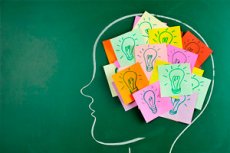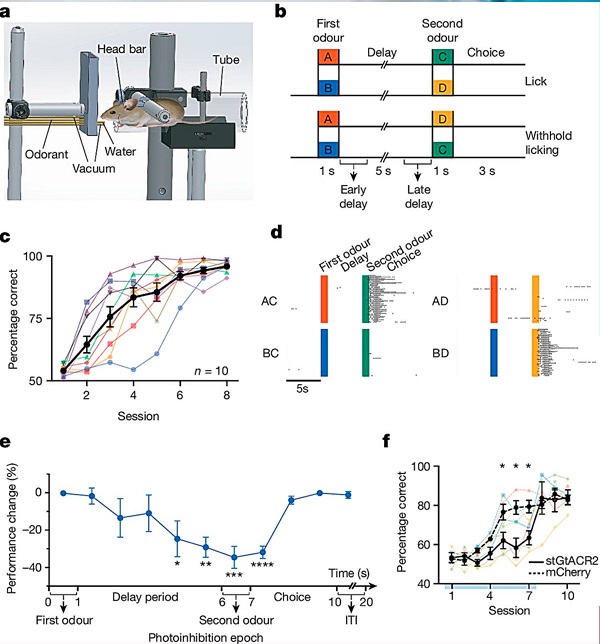
加州大学洛杉矶分校健康中心的一项新研究发现,反复练习不仅有助于提高技能,还会导致大脑记忆通路发生显著变化。
这项研究发表在《自然》杂志上,由洛克菲勒大学合作进行,旨在揭示大脑存储和处理信息的能力(即工作记忆)如何通过训练得到提高。
为了验证这一点,研究人员要求小鼠在两周内识别并回忆一系列气味。研究人员使用一种新型定制显微镜,同时对小鼠整个皮层多达 73,000 个神经元的细胞活动进行成像,以监测小鼠执行任务时的神经活动。
研究发现,随着小鼠重复执行任务,位于次级运动皮层的工作记忆回路发生了变化。小鼠刚开始学习这项任务时,记忆表征并不稳定。但经过反复练习后,记忆模式开始稳定下来,或者说“结晶化”,该研究的主要作者、加州大学洛杉矶分校健康中心神经学家佩曼·戈尔沙尼博士说道。

光遗传学抑制对工作记忆 (WM) 任务表现的影响。A
. 实验设置。B
. 延迟联想 WM 任务中的试验类型;在 3 秒选择期内评估舔舐行为,并标记早期和晚期延迟期。C
. 八个训练环节的学习进度,以正确回答的百分比衡量。D
. 示例训练环节,标记舔舐行为。E
. 光抑制对不同时期任务表现的影响(延迟期的第四秒,P = 0.009;延迟期的第五秒,P = 0.005;第二种气味,P = 0.0004;选择期的第一秒,P = 0.0001)。使用配对 t 检验进行统计分析。F
. 在训练的前 7 天,延迟期的最后 2 秒内对 M2 进行光抑制会损害任务表现。 n = 4(表达 stGtACR2 的小鼠)和 n = 4(表达 mCherry 的小鼠)。通过双样本 t 检验确定的第 1-10 个疗程的 P 值如下:P1 = 0.8425、P2 = 0.4610、P3 = 0.6904、P4 = 0.0724、P5 = 0.0463、P6 = 0.0146、P7 = 0.0161、P8 = 0.7065、P9 = 0.6530 和 P10 = 0.7955。对于 c、e 和 f,数据表示为平均值±sem NS,不显著;*P ≤ 0.05、**P ≤ 0.01、***P ≤ 0.001、****P ≤ 0.0001。
资料来源:《自然》(2024)。 DOI:10.1038/s41586-024-07425-w
“如果你把大脑中的每个神经元想象成一个音符,那么大脑在执行任务时产生的旋律每天都在变化,但随着动物不断练习这项任务,旋律会变得越来越精细和相似,”戈尔沙尼说。
这些变化让我们了解了为什么通过反复练习,表现会变得更加准确和自动化。
戈尔沙尼说:“这一发现不仅增进了我们对学习和记忆的理解,而且对解决与记忆障碍相关的问题也具有重要意义。”
这项工作由加州大学洛杉矶分校项目科学家 Arash Bellafard 博士与洛克菲勒大学的 Alipasha Vaziri 博士团队密切合作完成。

